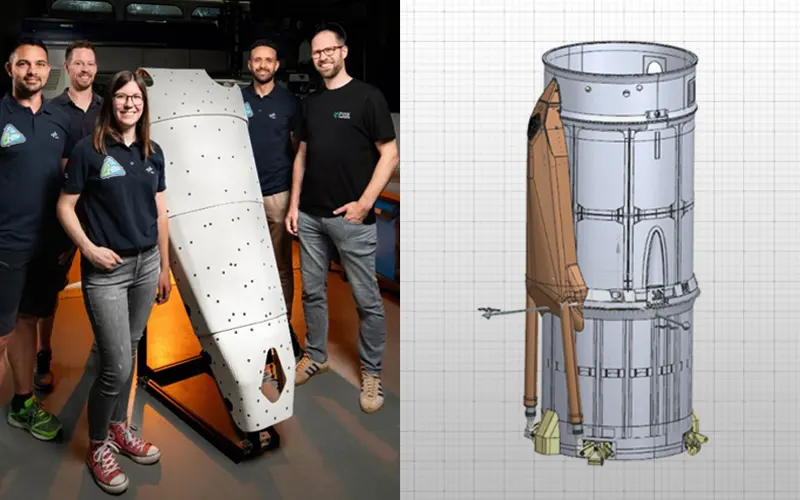The German aerospace agency DLR has completed the manufacturing of a key component of the thermal protection system for the landing legs of its Callisto reusable booster demonstrator.
The Callisto project is a trilateral initiative between DLR, the French space agency CNES, and the Japanese space agency JAXA. The primary aim of the project is to mature key technologies for the development of future reusable rocket boosters.
On 30 July, the DLR Institute for Frontier Materials on Earth and in Space announced the completion of the first reusable clip-on Thermal Protection System (TPS) for the Callisto demonstrator’s landing legs. The component measures 180 by 90 centimetres and is designed to reduce thermal stress on the landing legs during final approach and landing.
According to the 30 July update, the clip-on TPS is manufactured from an oxide ceramic matrix composite using a proprietary vacuum-assisted slurry infusion fabrication process, which involves infusing a porous fibre preform with a ceramic slurry under vacuum.
The completed clip-on TPS will now be shipped to the DLR Institute of Space Systems in Bremen, where it will undergo qualification testing. Once qualified, the Institute for Frontier Materials on Earth and in Space expects to complete the fabrication of six clip-on TPS sets in 2026.
In April, DLR completed an even more significant milestone on the road to the launch pad by qualifying the demonstrator’s “Top Block”, which includes the demonstrator’s avionics, telemetry, communications, and flight control systems. With the completion of the first clip-on TPS and the start of its qualification, the Callisto project, which has often felt stalled, finally appears to be coming together.
An initial hop test flight of the completed Callisto reusable booster demonstrator is expected to lift off from the Guiana Space Centre in 2026. A total of ten flights are then planned to take place over a period of six months.
